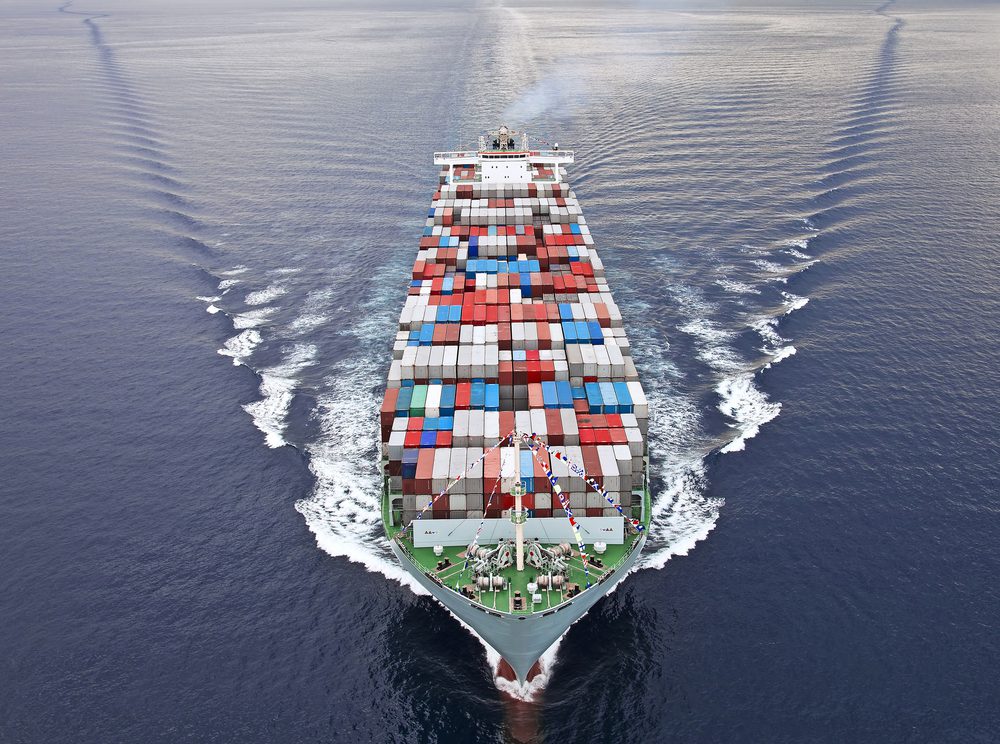By Mike Wackett
(The Loadstar) – The jury is out as to whether the dramatic fall in oil prices in the past two years has produced a net benefit for the world economy, but they have certainly given transport providers welcome relief from other worries.
Bunker prices are at a level not seen since the early 2000s, noted Drewry today, but given the way that carriers responded to rising fuel costs which spiked at more than $600 per tonne in 2007 and 2008 – by introducing slow- and super-slow steaming, thus requiring more vessels on their networks – the consultant queried the impact of fuel in the $100-$150 per tonne range on the strategic planning of container lines.
Using a typical Asia-North Europe loop incorporating vessel, bunker, port and canal costs as a model, Drewry calculated the respective slot costs versus number of vessels deployed at bunker prices of $600, $300 and $100 per tonne, operated by 11, 10 and nine vessels respectively.
Cutting the number of ships on a loop to the pre slow-steaming era of nine vessels, average service speeds for both the headhaul and back haul routes would need to be increased to 22 knots, according to Drewry’s calculation.
At $600 per tonne for bunker fuel, the savings from slow-steaming are clear, but as the price falls the advantage diminishes.
“At $300 per tonne, there is very little change in slot cost if loop speed is increased and the number of vessels reduced,” said Drewry.
And at a bunker price of $100 per tonne, “there are clear cost savings from increasing service speed, and reducing the number of vessels per loop”.
However, Drewry does not expect an immediate rush to speed up loops on east-west trades, because of the already chronic overcapacity, which would be exacerbated by more surplus tonnage.
Notwithstanding that carriers and alliances would need to realign carefully planned networks if fewer ships were used, there is also the nagging fear that oil prices could increase just as dramatically if there was a turnaround in the supply/demand oil equation.
However, Drewry argued, current low fuel costs provide an opportunity for carriers to gain a marketing advantage over peers by offering a faster service on key routes.
Smaller, opportunistic carriers that can no longer compete on freight rates with the larger container lines could use this strategy to make money in the present trading conditions.
A separate Drewry ship system model – comparing economies of scale between various size ships – showed the slump in fuel prices had significantly narrowed the cost advantage gap between ship sizes.
Interestingly, the chart shows that, at today’s bunker prices, there is hardly any unit cost benefit for a carrier operating a 14,000 teu ship compared with an 18,000 teu vessel – and of course the larger ship still needs to be filled.
The Loadstar is fast becoming known at the highest levels of logistics and supply chain management as one of the best sources of influential analysis and commentary.
Check them out at TheLoadstar.co.uk, or find them on Facebook and Twitter.
Unlock Exclusive Insights Today!
Join the gCaptain Club for curated content, insider opinions, and vibrant community discussions.

 Join The Club
Join The Club







![A screengrab of a map showing an earthquake Mindanao, Philippines on Dec 2, 2023. (Image: US Geological Survey [USGS])](https://gcaptain.com/wp-content/uploads/2023/12/Screenshot-2023-12-02-at-10.45.17-AM-copy.png.webp)





